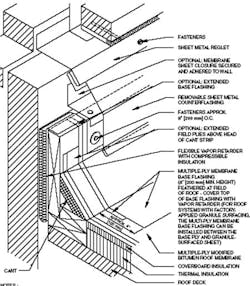Last month at the West Coast Energy Management Conference in Seattle, I was struck by the ongoing developments in LED lighting. If you pay more than 10 cents per kWh, you should look at LEDs for practically any retrofit application.
Read on for my report on new LED technology and some buying tips and caveats.
LEDs That Talk to Each Other
LED fixtures can now see and talk to each other, allowing them to form clusters. For example, in an office you can install fixtures that recognize themselves and other nearby fixtures and then define the circuit. The fixtures can communicate over WiFi and the web, allowing facility managers to control individual fixtures from a mobile phone.
Each fixture in such a network becomes a unique machine that can be remotely programmed (and re-programmed) to provide a variety of lighting presets for a specific space. For example, in a convention center, you can select preset illumination for an expo then quickly transition to illumination for a banquet by pushing a button.
With such communication ability, a lighting network need not be limited to lighting control. An application that may seem like an invasion of privacy involves retail stores. By recognizing a consumer’s cellphone signal, the WiFi integrated into lighting fixtures can detect when a consumer is near a particular area and send a coupon for products displayed there. The systems in the fixture can integrate data from social media (Google, Facebook, etc.) to target specific customers based on their prior search habits and purchases. However, this application requires permission from the consumer.
In addition to LED, Light Emitting Plasma (LEP) lighting was featured at the show. The technology provides superior optics for certain applications, notably high bay situations, where they can replace 1000-watt metal halide fixtures. The lighting has good quality, 50,000-hour lamp life, and a color rendering index (CRI) above 75. However, you may find it difficult to find local experts/installers of LEP lighting in your area.
Warranties and Other Buying Basics
In my meetings with LED designers and users over recent years, I have identified a few items to be wary of when buying LEDs.
It is key to look for a good warranty from a reputable brand. A five- to seven-year, “no questions asked” warranty is now the standard, so don’t settle for less, especially if some of your calculated savings come from reduced maintenance costs due to longer intervals between relamping.
Another common warranty offers a 100% refund if the LED lamp fails within five years. After the fifth year, the refund amount drops by 10% each year until the tenth year, when the LED manufacturer would refund 50% of the purchase price of a failed lamp. Save your receipts and buy from a brand that will likely be around in 10 years.
You also want to buy products that have participated in standard tests such as LM-80, which is a method to show when LED products will depreciate to 80% of design lumens. High ambient temperatures reduce lamp life, so be sure that LED lamps are installed in the correct fixture.
LEDs offer significant energy and demand savings, but a lesser discussed benefit is dimming capability. Not only does dimming represent additional savings but also gives you the ability to provide the right amount of light to your occupants. Lighting systems are routinely designed to be too bright, especially during the first two years, so dimming allows some flexibility while saving energy. Many facilities have found that they can dim the lights by 10% or more throughout the fixture life.
A final caution is that LEDs can appear much brighter than other lamp options. Some LED marketing materials will show you how great the LEDs appear from the perspective of a helicopter. However, at ground level you may notice substantial glare if the fixtures are not designed for LEDs (see photos). Always test several fixtures before you buy all the lighting for a retrofit.
---------------------------------------------------------
